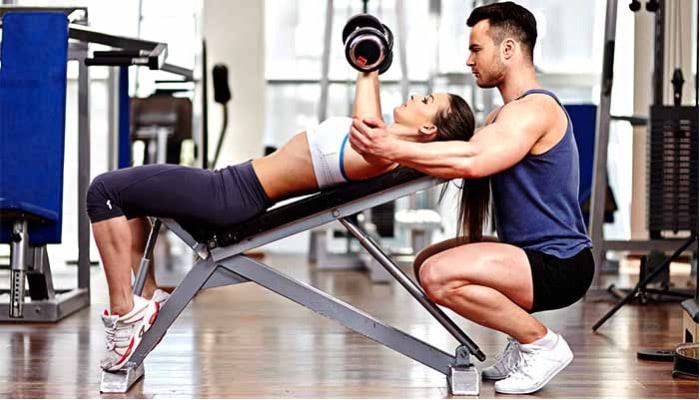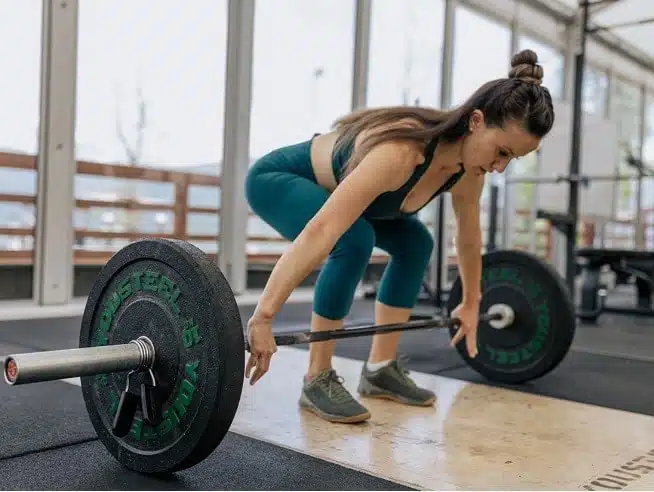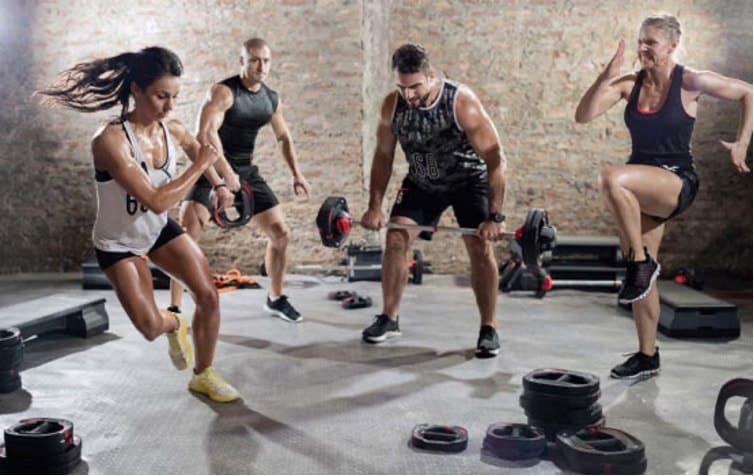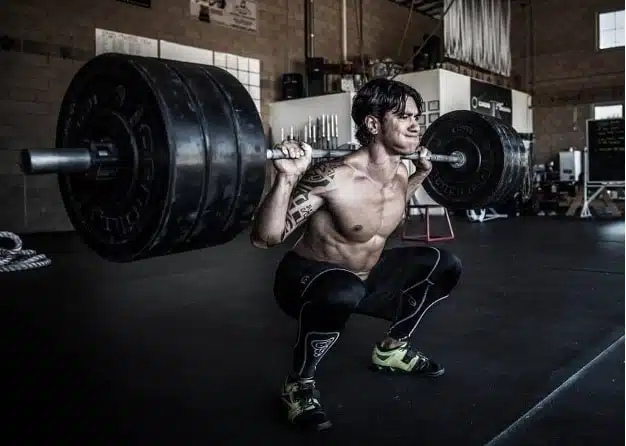3 de April de 2023
Everything About Macrocycles, Mesocycles, And Micro cycles In a Strength Training Program
The world of personal and sports training has grown enormously in recent years. The practice of physical exercise and physical activity is intrinsic to human being. In fact, our ancestors used to make great physical efforts to hunt, plant, or move around, and the practice of physical exercise was common in human beings. So much so that, our genetic code is prepared in one way or another to exercise and “burn” a certain amount of calories per day. The problem of today’s society is that we do not perform all the physical exercise we should and, therefore, it is normal for metabolic diseases such as diabetes, hypertension or cancer to arise.
However, despite the fact that human beings have been sculpting their bodies and physical abilities for many years, it has been in the last decades that knowledge about physical exercise has advanced enormously. The advancement of endurance and strength sports has promoted a desire to know what the best training systems are to improve performance. Physical exercise itself as a therapy for the aforementioned diseases has also led to an explosion of knowledge from the year 2000 onwards. And of course, the advancement of technology has allowed to have a better control of the training load. Training load is the main variable on which any exercise-related results depend. If the training load is not high enough, it will not result to any changes in the musculoskeletal, cardiovascular, or endocrine systems. For example, if we base our exercise program on performing only one set per week for each muscle group, the training load will be insignificant, and there will be no improvement. Conversely, if we perform 20 sets per day for each muscle group, we are to injure ourselves because the training load will be excessive.
In other words, the training load is the key piece that makes the entire training and physical exercise system work (1). Depending on how that load is organized, the results obtained will be different. Because of this, a few years ago a training system was created to organize a sports season or a training planning. We are talking about macrocycles, mesocycles, and microcycles, which we will explain in this week’s post.”

What are microcycles, mesocycles and macrocycles?
The difference between a macrocycle, a mesocycle and a microcycle is the time allocated to each one of them. As everyone could interpret these segments of a training program, they are composed of each other (2). To explain it, we will use a metaphor related to Russian dolls. Russian dolls are those dolls that open in half and have another doll inside, which in turn opens in half and has another doll inside… and so on, as many times as the doll allows. With the distribution in macrocycles, mesocycles and microcycles something similar happens. The macrocycle would be the large doll where the mesocycle is found, the medium doll would be the mesocycle that would contain another smaller doll inside, that would be the macrocycle. In this way, in a year’s programming, we could find:
- 4 macrocycles (a quarter would be a macrocycle)
- 12 mesocycles – 3 mesocycles within 1 macrocycle (a month would be a mesocycle)
- 48 microcycles – 4 microcycles within 1 mesocycle (a week would be a microcycle)

This is an example of how a training plan can be structured. However, there is no fixed rule that determines how long a macrocycle, mesocycle or microcycle should last (3). In fact, some people use microcycle to refer to a single training session and it is also valid. Taking into account this distribution, planning the training season for a Spanish first division team is not the same as planning the training for an amateur sprint triathlete, and it has nothing to do with the planning of a bodybuilder. In this case, we will focus on the distribution of macrocycles, mesocycles and microcycles for a strength training with the goal of increasing muscle mass and strength.
Where do I start organizing my training plan?
First and foremost, it is important to determine which variables are crucial for performance in our sport (4). In this case, the main variable we need to develop is muscular strength. As mentioned in previous posts, speaking about muscular strength in a general sense is futile. The strength developed by a marathon runner is not the same as that of a weightlifter or a gymnast. Today, we will focus on improving strength in a general sense, but especially in basic exercises such as squats, deadlifts, or bench press (5). To be more specific, we will aim to improve maximum strength, which is the greatest amount of weight a person can lift, commonly referred to as one-repetition maximum or 1RM.

Once the main variable has been identified, it is important to know that a training plan can be organized from large to small or from small to large. That is, one can start by organizing the microcycles and later structure the macrocycle, or initially determine how many macrocycles will be given and then become increasingly specific at the microcycle level. The choice is free and there is no one that is better than the other.
Secondly, in order to organize a training system properly, we need to know when we want to increase that 1RM or when we have the competition. Let’s assume that the competition is in June and that person starts training in January. We have 6 months for the entire training, therefore, the distribution of macrocycles, mesocycles, and microcycles will be subject to the time we have for preparation. It should be mentioned that in high-performance athletes, planning is very structured and is organized with more advance notice. Considering the exercises, we want to improve and taking into account that we only have 6 months of preparation, one of the options we can consider is to organize 3 macrocycles of 2 months each, 2 mesocycles within each macrocycle, and 4 microcycles per mesocycle. This way, each week represents a microcycle. In my view, talking about microcycles focusing on weeks is the best way to structure a training system since scientific literature talks about weekly volume per muscle group for strength or muscle mass improvement. If I know that I need to perform X sets of X muscle groups per week, my way of organizing training is based on that calculation. With this organization, we would have the distribution of macrocycles, mesocycles, and microcycles for a preparation to improve muscular strength in squat, bench press, and deadlift movements.
What do I do in each macrocycle, mesocycle and microcycle?

Training theory states that the further away the athlete is from competition, the greater volume of training can be accumulated, while as the competition date approaches, the volume should be reduced to some extent to increase intensity and have a small unload before the competition. Therefore, we can establish that in the first and second macrocycle we will have a higher training volume, that in the second macrocycle we will add intensity and that the third macrocycle will be aimed at a final preparation for the competition day. Therefore, we have already defined the distribution of macrocycles:
- 1st Macrocycle: Training volume.
- 2nd Macrocycle: Less training volume and increase in intensity.
- 3rd Macrocycle: We maintain a low volume and reduce the intensity for the final preparation
One thing we haven’t previously discussed but which is undoubtedly of great importance is establishing goals for each segment of the training. The goals for each macrocycle, mesocycle, and microcycle should be specific and must be achieved. In our case, we can set the objective within each mesocycle to work more specifically on a movement pattern (6). For example, an objective for the first mesocycle could be to increase leg muscle strength and mass to improve performance in the squat and deadlift. Within that mesocycle, one week could be dedicated to improving strength in the squat pattern and another week to improving the deadlift pattern.

How do I know if my planning is paying off or not?
This is one of the biggest doubts that can scare us when preparing a training program. The first thing we must understand is that performance is not synonymous with good or bad planning. There are extrinsic factors to training that affect performance. For example, we could not define a training program as good or bad if a person performs poorly on the day of the competition because they didn’t sleep well or have gastrointestinal problems. Even if the training plan has been executed perfectly, if there have been other variables that have affected our athlete, their performance may not be improved. That being said, if proper planning is followed and there are no training failures, results will come naturally.
However, we should not wait until the day of competition to check if our training system is efficient. There are currently multiple technologies that tell us if we are training well or not, and one of them is the linear encoder from Vitruve. Rather than giving us positive or negative feedback, it can tell us in a very simple way if our performance is improving from one microcycle to another. Let’s take the example of the squat to make it clear how the Vitruve device is the best indicator of physical training.

When we prepare the microcycle for a week, we set to do free squats on Monday and Thursday, for example. Most likely, we already have the number of sets, repetitions, warm-up sets, or the type of effort we are aiming for. We perform the exercise and place the Vitruve device because we are going to work with a 20% loss of velocity. Remember that the Vitruve linear encoder can be programmed to sound when we have exceeded a certain drop in velocity.
With all this, this week the athlete moves the weight with an average of 0.91 meters per second. The device itself and its application tells you the velocity of each repetition, and you can obtain the average speed of execution. Once the first mesocycle is over, we perform the same exercise again and check that the velocity has increased to 0.99 meters per second. We have verified that performance has improved, and we did not have to wait until the end of the program to know if we are improving or not. The Vitruve device is a great ally in this sense because it helps us objectively control the training load and evaluate whether our athlete has improved or not.

Conclusion
As a conclusion, we can establish that macrocycles, mesocycles, and microcycles are forms of organizing training. Their organization depends largely on several main factors:
- Identify performance variables and organize distribution based on them.
- Know the training time available until the main competition.
- Establish specific objectives for each macrocycle, mesocycle and micro cycle.
Once we have this clear, putting it into practice is essential. Having a very nice planning on paper is useless if we can’t carry it out. In addition, we must bear in mind that planning must be flexible since we never know what will happen in the next 3 months. Flexibility is a characteristic that should be innate in any physical trainer.
Finally, we should not wait until the end of the microcycle, mesocycle, or macrocycle to evaluate whether our work has been good or not. Thanks to technologies like Vitruve’s linear encoder, we can have greater control of training load and evaluate whether the athlete has improved with the prescribed training. Remember that the distribution of microcycles, mesocycles, and macrocycles is a way to structure training and that there is no recipe for all sports or all expressions of strength.
Unai Adrián Perez de Arrilucea Le Floc’h
References
1.Baechle TR, Earle RW. Principles of strength and fitness training: Ed. Médica Panamericana; 2007.
2.Issurin V. Sports training: Periodization in blocks: Paidotribo; 2019.
3.Bompa TO, Buzzichelli CA. Periodization of sports training: Paidotribo; 2017.
4.Mirella R. The new methodologies of strength, endurance, speed and flexibility training: Editorial Paidotribo; 2006.
5.Kraemer W. Strength training: Editorial Hispano Europea; 2006.
6.Moreno JIM. Clarification of concepts related to sports training. EA, Open School: Journal of Educational Research. 2004(7):55-72.

